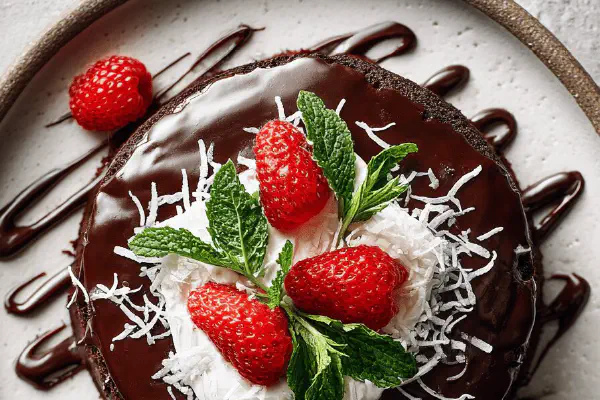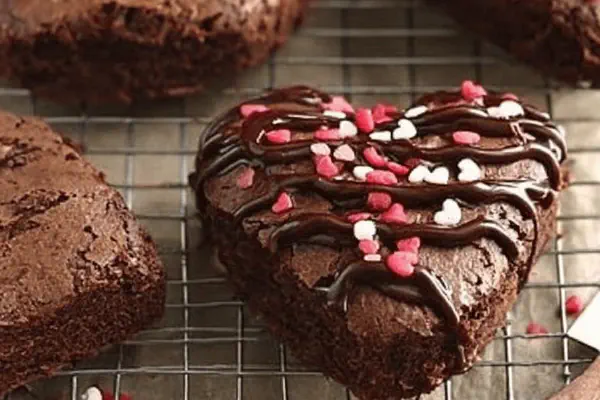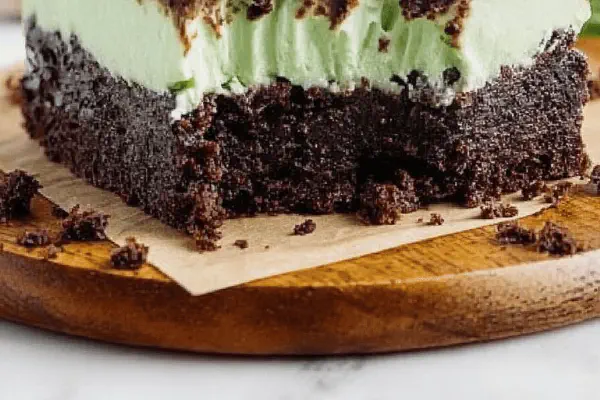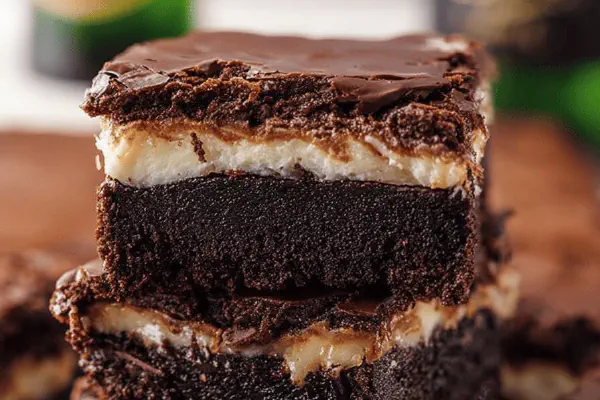Ultra Rich Chocolate Ganache
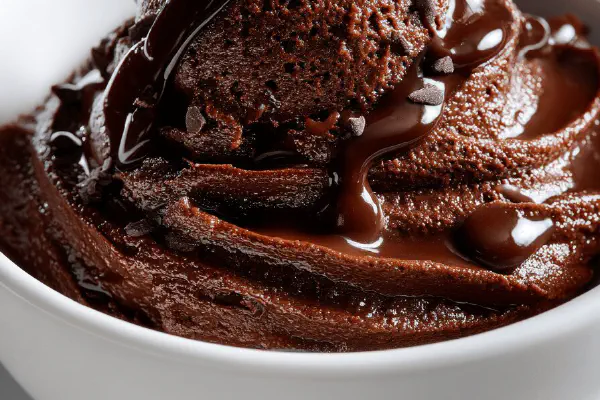
E
By Emma
Certified Culinary Professional
•
Recipe tested & approved
Dense, creamy ganache made with bittersweet chocolate swapped for semi-bitter to cut sweetness. Heavy cream switched to coconut cream for depth and softness. Butter replaced with coconut oil adding silkiness and subtle coconut aroma. Technique involves gentle heating and timing to avoid seizing chocolate. Chill until spreadable but not rock hard. Watch color changes, texture shifts. Whisking after resting critical. Usual mistakes include overheating cream or stirring too soon, dull texture. Practical swaps, timing cues, and sensory tips ensure luscious, shiny ganache you spread, dollop, or drizzle. The method works with many chocolates and fats but the balance is key. Experience matters.
Prep:
4 min
Cook:
3 min
Total:
36 min
Servings:
8 servings
#ganache
#chocolate
#dairy-free
#French-inspired
#dessert
Chocolate melting. Cream steaming. Butter melting. All familiar. But switch out once—semi-bitter chocolate cuts sweetness; coconut cream throws in tropical weight, a heavy swing that’s velvet smooth. Coconut oil replaces buttery richness, melts in with a silky kiss. No rush stirring. Wait, watch chocolate softening underwater, gentle wave of cream; shy before the mix. Whisk to shine, add oil for gloss. Chill with feeling—texture’s your guide, not clocks. Usually overheat, ganache dulls; stir too soon, breaks. Learned that past tries, messy cleanups. Every batch, a scent, a texture, a visual line. That’s how you know. Thick but spreadable. Layer cakes, dollop atop tarts, or just lick the bowl.
Ingredients
- 190 g semi-bitter chocolate chopped fine
- 200 ml coconut cream full fat
- 25 ml coconut oil solid or liquid
- 5 ml vanilla extract optional
About the ingredients
Substituting semi-bitter for semi-sweet cuts cloying sugar and lets cocoa shine better. Coconut cream—not coconut milk—adds necessary fat content, richer mouthfeel, plus faint coconut scent that works well with darker chocolate. If coconut cream unavailable, heavy cream 35% is default. Butter swaps out for coconut oil to keep more dairy-free, or try ghee for nuttier notes but less coconut aroma. Fats separate melting points so temperature control is critical; chill gently; avoid rapid cooling that cracks ganache texture. Vanilla optional but elevates subtle notes. Chocolate quality matters; chopped fine pieces melt faster, fewer spots where chocolate over or undercooks.
Method
- Chop chocolate small so it melts evenly; place in medium heatproof bowl.
- Heat coconut cream in small pan or microwave till almost boiling but bubbling edges only, no rolling boil; aroma changes to toasted notes.
- Pour cream immediately over chocolate; don’t stir right away. Let it sit 90 seconds, watch chocolate lumps soften, cream swirl slowly approach glossy.
- Using a whisk, mix gently but continuously until glossy, homogeneous. Avoid over whisking or air bubbles form.
- Add coconut oil in small cubes. Stir just till melted and incorporated; should add shine and silkiness; no lumps.
- Add vanilla extract now if using, for aroma lift.
- Let ganache cool at room temp 15 minutes, then refrigerate 40 minutes covered. Check texture every 10 minutes; ready when it spreads but doesn't drip. Test with fingertip or back of spoon.
- If too firm after chilling, warm very briefly at 5-8 second bursts in microwave. Stir before serving.
Cooking tips
Chopping chocolate evenly is step one—big chunks prolong melting, risk hot spots. Heat cream just to edge-of-boil bubbles without rapid rolling boil; overheated cream dulls ganache sheen and risks breaking chocolate mass. Rest ganache mix without stirring; let molten chocolate soften in creamy heat; this pause allows gentle fusion, avoids graininess. Whisk gently, constant but soft motion to merge fat and cocoa smoothly; over-agitation folds in air bubbles, ruining texture. Adding coconut oil last locks shine and silk; melting butter or oil into hot ganache avoids clumps. Refrigerate with cover; ganache firms as fats reset. Check texture often; don’t wait till frozen solid. Warm slightly in microwave with care—seconds count—then stir to reset texture. Use fingertips; ganache should feel spreadable, not slippery or crumbly. Your visual and tactile instincts guide timing—not timers alone.
Chef's notes
- 💡 Chop chocolate finely; uniform size melts evenly, avoids hot spots. Big chunks mean uneven melt, risk seizing. Heat cream barely bubbling edges; rolling boil kills sheen. Aroma shifts to toasty notes signal ready. Pour over chocolate fast, no stirring first; wait that 90 seconds. Chocolate lumps soften underwater, cream moving slowly. Critical pause stops grainy mix forms.
- 💡 Whisk gentle but constant once starting. Too fast or over-agitating folds air in; bubbles tough to fix. Mix just till glossy, homogenous. Add coconut oil small cubes; stir minimal till melted in; no lumps allowed. Oil locks shine, silkiness. Adding vanilla late keeps aroma fresh; skip if no vanilla on hand.
- 💡 Cool ganache at room temp 15 mins before fridge. Chilling time varies; check texture every 10 minutes. Should spread, not drip or slump. Too firm? Warm very brief bursts 5-8 seconds in microwave. Stir right after; resets texture fast. Avoid rapid chilling that cracks fat layers; patience beats rush.
- 💡 Coconut cream—not milk—critical for fat content and texture. Heavy cream 35% okay backup but less coconut scent. Butter swapped for coconut oil to avoid dairy; ghee works but reduces coconut aroma, adds nuttiness. Different fats melt at different temps; temp control must be tight; or texture breaks.
- 💡 Watch visual cues more than clocks. Color darkens slightly as mix cools, texture thickens slow. Fingertip test beats timers; spreadable means ready. Avoid stirring too soon; dulls sheen, breaks texture. Overheating cream brings dull ganache, breaks cocoa fat bonds. Smell changes and gentle swirl tell you when done resting before whisk.
Common questions
Can I use regular cream instead of coconut cream?
Yes, heavy cream 35% works but less fat and coconut scent. Texture changes; ganache less tropical. Adjust chill timing; might firm different.
What if ganache seizes?
Overheated cream or stirring too soon main cause. Warm gently, add small oil or cream to loosen. Fixing requires care; sometimes remake easier than salvage.
How to test ganache readiness?
Don’t just watch clock; fingertip or back spoon test spreadability. It’s thick but not hard or runny. Texture cues beat timers every time. Visual darkening helps.
How to store leftover ganache?
Refrigerate covered; lasts few days. Can freeze but texture shifts on thaw; whisk after thawing. Microwave bursts can soften before use. Room temp short term okay but watch spoilage.
